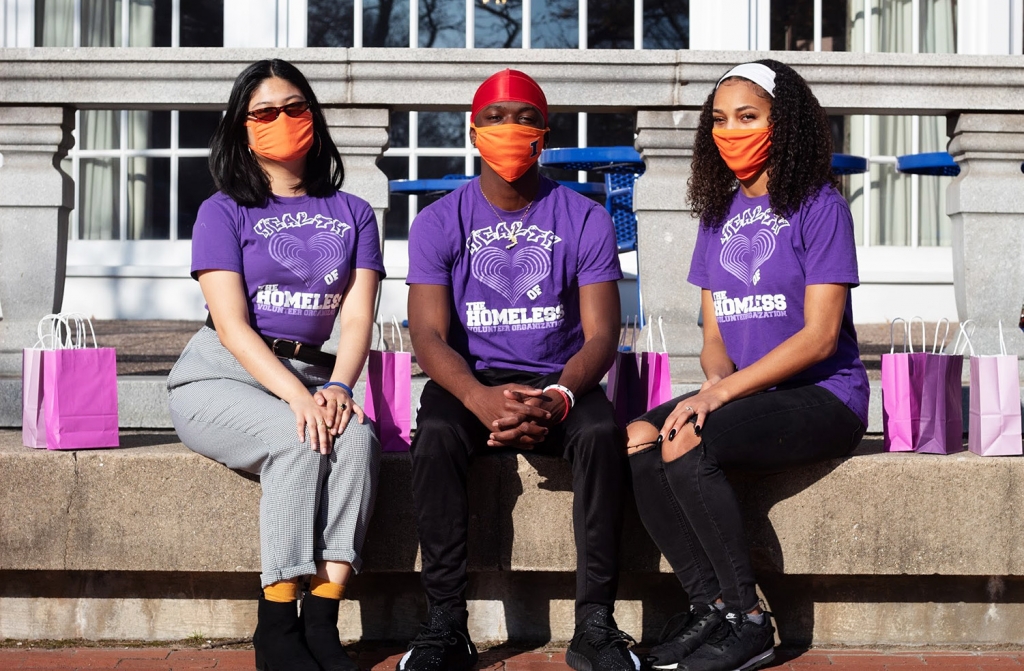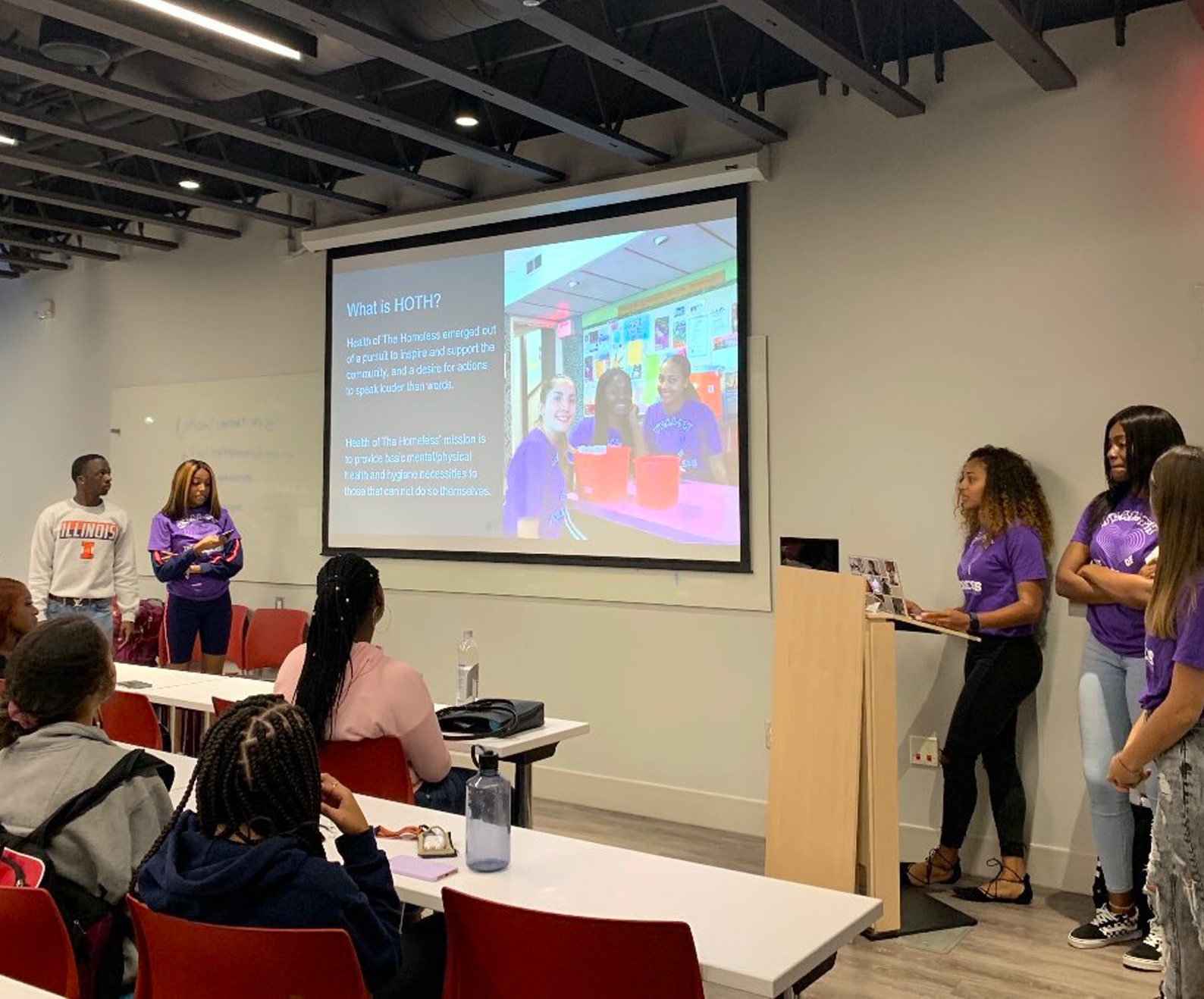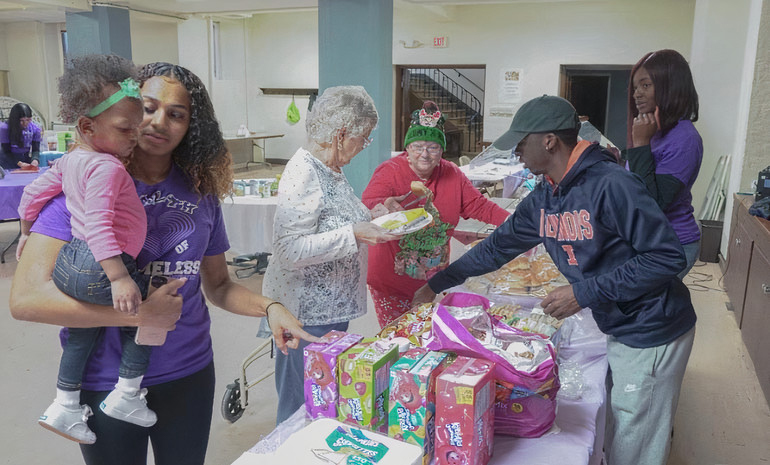For Health of the Homeless, service is always a priority, especially during turbulent times like these. We sat down with president and founder Hannah, vice president Janina, and volunteer coordinator David to talk about community outreach, their favorite experiences as part of the organization, and why advocacy is central to their world views.

When did Health of the Homeless start?
Hannah: We started last fall, and it really became bigger second semester, even though we had to slow down once COVID happened. We started off with just our executive board members, and then it began to grow.
What prompted you to begin the organization?
Hannah: I was triggered by the lack of health education in Chicago. Last summer, both of my grandparents got diagnosed with cancer, and we were discussing a lot of different things. I was thinking about how people need to be educated more, but then I really thought about the homeless population.
It’s obvious that homeless people don’t get what they need. We often give them things like clothes and food, but they don’t get basic things like band-aids, hand sanitizer, alcohol wipes. So it was something that I thought would be helpful in Champaign. … We get our education there even though we may not be from there. It’s our duty to give back and try to volunteer.
What’s the purpose of Health of the Homeless?
David: We are here to help the homeless population, but branching out into the Champaign-Urbana community gives us access to not only homeless students or students who struggle, [but] students who want to volunteer in our community. And we also get to help and reach out to people who are not only native to Champaign-Urbana, but even to people from across the world.
Janina: I feel like even though our organization is called Health of the Homeless, you don’t have to know what their status is with housing, if they’re food-insecure or not. We’re just here to help anyone who may or may not need it.

What does a typical meeting look like?
Hannah: Our executive board is about six people. We get together and discuss what needs to be done. We try to interact with the community to hear what they actually want rather than just what we think they need. After doing that, we act.
Can you give an example of the kind of outreach you do?
Hannah: Our first event was a donation drive, and we collected clothes, shoes, money—whatever people wanted to give. We had a donation giveaway at UniPlace Church, on campus in Champaign. That place usually hosts a family dinner. Every week, they have food for whoever needs it, whether or not you’re homeless. … It was really a fun event; it was a family-type barbecue. It wasn’t really something where people would feel uncomfortable or feel like they needed our help.
Janina: We try to collaborate with other organizations on campus, especially our Black organizations and organizations of color. We invited Black fraternities and sororities for our donation giveaway just to get everyone on campus involved.
Why do you think it’s important to do these kinds of events?
Hannah: I think it’s really important for people in the community—that are from there, live there—to see our faces as UIUC students, because I know sometimes it can be a negative. … So I think it was just really important to show them that we care. Like, we’re actually in their community where we go to school.
Can you talk about your collaboration with other organizations?
Janina: I think it’s just organizations helping organizations. We also work with a local clinic, Avicenna, and their focus and mission is really similar to ours. During our donation drive, we had Avicenna members there to take people’s blood pressure and give them health information about the clinic, because it’s a free clinic for people with or without insurance. I think collaborating and having a space where you can get food, where you can get clothing … I think that’s just the definition of community, and that’s what we’re about.
David: Partnering with people who are both in the university, like other RSOs [registered student organizations] or clubs, and outside businesses or corporations not only allows us to have bigger events, but it cultivates an environment where more people are going to have events that are going to better the community. We like to keep the ball rolling. I feel like the partnerships not only allow us to have bigger events, but they lead to a better thing.

What’s been one of your favorite experiences through Health of the Homeless?
David: I think my favorite was probably when we passed out food on Green Street. … We just passed out food to people, to homeless people or anybody. That was really fun to me, as we got to interact with people. It was a change of scenery literally every minute. We met new people, we met people who wanted to volunteer.
Hannah: I have two. I think one was obviously the donation drive. There was a little girl there that kept following me and talking to me, and her mom talked to me about their struggles. But I really love kids, so when she was hugging me and playing with toys, I was like, “I like this.”
The second thing is probably getting my peers involved, because I know college students are busy. But once I saw people really wanting to get involved, I got excited. And even though I know part of it was to get African American students involved, our executive board is very diverse.
Why did you feel it was important to have an organization that featured students of color doing volunteer work?
Hannah: Well, we attend a PWI [Predominately White Institution]. David and I are both pretty active with BNAACC [Bruce D. Nesbitt African American Cultural Center], and we’re active in different organizations for people of color. I realized we didn’t have one that broadcasted how people of color want to give back. Some sororities and fraternities do that, but this is exclusively volunteering.
And then really, when you want to help people, you try to get whoever you can involved. So that’s where diversity came in, because it’s not okay to leave people out if you’re just trying to get a point across. I think the diversity helps us a lot. We learn from each other, we get other people involved, and we still are able to bring in the groups that we see as important to us.
Why is service important to you?
Hannah: I just realized how many good things came my way … . The more that we give to the universe, or the more good that we put out, the more it comes back, and not even just to us.
Janina: Yeah, we can use whatever privileges and resources we have to redistribute it to the community outside of our school, within our school, and then within Champaign-Urbana.
Returning to campus this fall during the COVID-19 pandemic, have your goals shifted?
David: I would say our goals are going to remain the same. They might even pick up, as there are new people reaching out during the pandemic trying to volunteer next year, and people are staying interested. In addition, I feel like there will be even more that we can do and more than we can give, especially to people who are suffering from the pandemic.
Janina: I think we’re going to have to rely on social media a lot more and working in smaller groups at our events. But either way, we’re still all about reaching out with the community and working with our established relationships.
How can students get involved in your organization, and how can people be agents of change in their own lives?
David: We have meetings or info nights where students can get a brief overview of our goals and work that we’ve done. They can leave their name and their email address, and they’ll be contacted sometime in the future about events or different volunteering programs that we have set up.
As far as volunteering in their own communities, I think it’s just about finding people who want to put their best foot forward and organize their own things. One idea can become a very, very big success.
With 1,000 registered student organizations (RSOs) at UIUC, the possibilities are endless. To learn more about Health of the Homeless and how you can get involved, check out their website and socials below.
- Website: healthofthehomeless.wixsite.com/website
- Twitter: twitter.com/hothuiuc
President: Hannah Glass
Vice President: Janina Rojas
Volunteer Chair: David St. Preux
Secretary: Antoinette Kennebrew
Treasurer: Kayla Baldwin